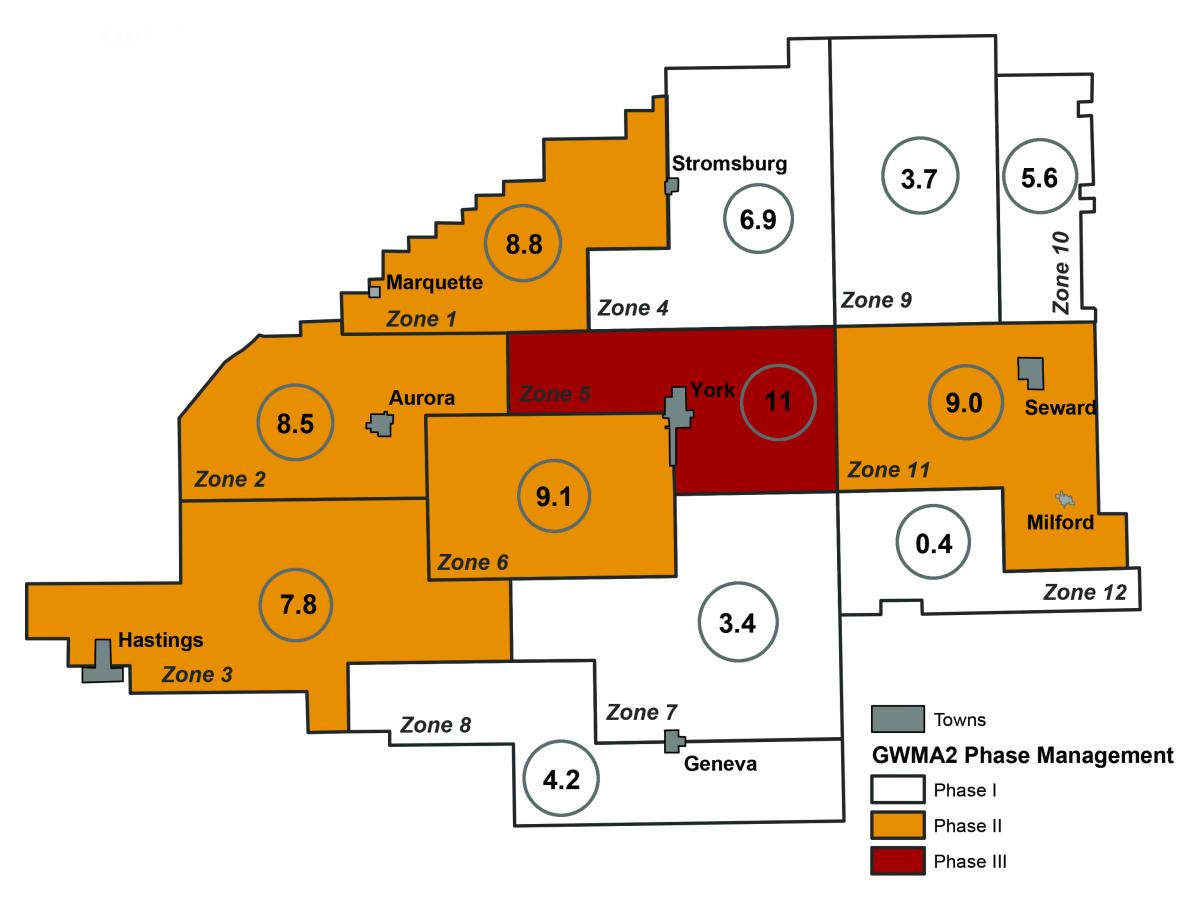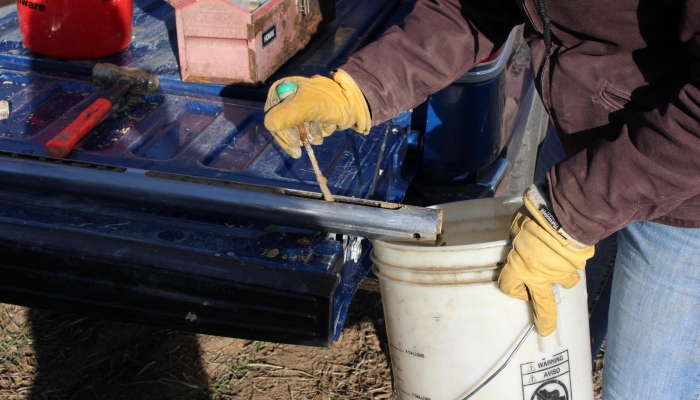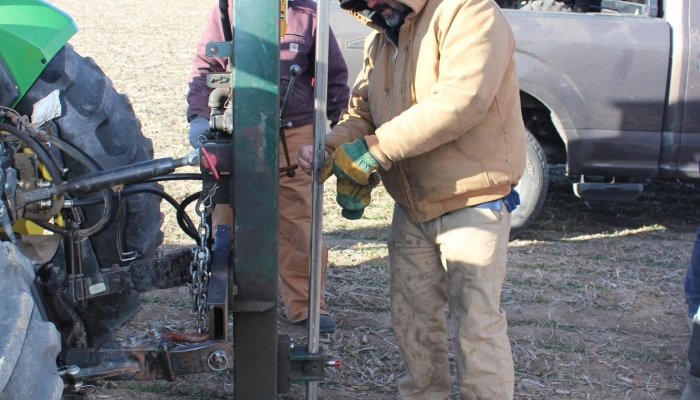Vadose Zone Study Examines What Lies Beneath
The soil under your feet can tell you a lot about the quality of the water hundreds of feet below. A new research collaboration between the Upper Big Blue NRD and the University of Nebraska-Lincoln will focus on measuring indicators in the vadose zone across the district. The vadose zone is the area beneath the plant root zone and above the groundwater table. It is also referred to as the unsaturated zone.
The focus of the study will be to look at groundwater nitrate and other agrochemical contaminant occurrence in the vadose zone. To do this, researchers will examine both historic and spatial changes in groundwater nitrate throughout the district’s 12 water quality management zones to compare the changes in nitrate levels. Nitrate levels will be determined by drilling test holes for chemical analysis, along with characterizing the soil type and physical characteristics.
For the past few decades, NRD staff have documented a steady increase in nitrogen concentration in some parts of the district. While some areas of the district have seen decreases in nitrate levels, the district overall has had an increase of 54 percent.
This research will begin in the fall of 2021. The NRD is recruiting volunteers to take part in the study who have agricultural land. Selected study participants will be asked to fill out a survey to document current and historical management practices on the fields used in the study. Research will begin sampling in Zones 4 and 5 in fall 2021. It will proceed throughout the district until 2024, including two to three zones each year.
If you have any questions, or are interested in participating in the study, feel free to contact the NRD at info@upperbigblue.org or call (402) 362-6601.
Median Nitrate Levels Across the Upper Big Blue Natural Resources District
The focus of the study will be to look at groundwater nitrate and other agrochemical contaminant occurrence in the vadose zone. To do this, researchers will examine both historic and spatial changes in groundwater nitrate throughout the district’s 12 water quality management zones to compare the changes in nitrate levels. Nitrate levels will be determined by drilling test holes for chemical analysis, along with characterizing the soil type and physical characteristics.
For the past few decades, NRD staff have documented a steady increase in nitrogen concentration in some parts of the district. While some areas of the district have seen decreases in nitrate levels, the district overall has had an increase of 54 percent.
This research will begin in the fall of 2021. The NRD is recruiting volunteers to take part in the study who have agricultural land. Selected study participants will be asked to fill out a survey to document current and historical management practices on the fields used in the study. Research will begin sampling in Zones 4 and 5 in fall 2021. It will proceed throughout the district until 2024, including two to three zones each year.
If you have any questions, or are interested in participating in the study, feel free to contact the NRD at info@upperbigblue.org or call (402) 362-6601.
Median Nitrate Levels Across the Upper Big Blue Natural Resources District



